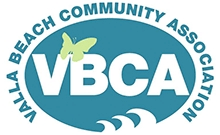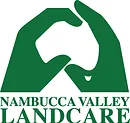Our Local Environment – Weeds, Bushcare, Dunecare and Landcare
Please help us to improve our local beaches, forests and environment - join a local volunteer group and/or eradicate weeds on your own property!
Valla Beach and Our Local Environment
Valla Beach is so lucky in that we are surrounded by bush land and coastal dune systems, with no development or housing right on the beach. We have Jagun Nature Reserve to the north, Valla Nature Reserve to the south and west, and crown lands in between.
The two Nature reserves are managed by the National Parks and Wildlife service (NPWS ) with the help of the voluntary Valla Beach Bushcare group
The crown lands are managed by Nambucca Valley Council assisted by the Valla Beach Dunecare group, a subcommittee of the Valla Beach Community Association (VBCA).
These areas are relatively pristine compared to many other similar locations in the Mid North Coast area and beyond, and this is thanks in part to the Valla Beach Bushcare and Dunecare groups who are volunteers.
Interested in Helping?
The groups spend just two mornings per month, just three hours each. One morning is with Bushcare with a dedicated NPWS ranger, and the other morning with the Dunecare group. So, it is not an onerous commitment and the groups would really appreciate your help.
If you live in a rural area then help and advice is available via Nambucca Valley Landcare.
If you are interested in assisting the local Bushcare or Dunecare groups, you can click here to contact us. For Landcare contact them directly using the information below.
Valla Beach Bushcare group:
Meets at 8:30 on the second Monday or each month and is led by an NPWS ranger who sets the work area and meeting point for that month in advance. Training and equipment, including PPE, is provided by the NPWS.
Valla Beach Dunecare group:
Meets 8:30 on the fourth Monday of each month and the group collectively decide the work area and meeting point a few days beforehand. You provide your own equipment and PPE so being a member of the Bushcare group is a definate plus!
Nambucca Valley Landcare
Learn more, help out, get involved!
web: www.nvlandcare.org.au/
Facebook: https://www.facebook.com/NambuccaValleyLandcare/
Ph: 6564 7838
e: coordinator@nvlandcare.org.au
Houston, we have a problem, a Berry Bad problem!
Yes, our beachside areas are indeed relatively pristine with just a handful of the more common weeds such as Lantana, Bitou Bush and Senna (Cassia). Nambucca Valley Council have concerns for Tropical Soda Apple in rural areas of the valley.
However, in the last few years the Valla Beach bushcare volunteers and Nambucca Valley Landcare are seeing our local environment invaded by a very pretty plant called Coral Berry (Ardisia crenata). It loves the dark shady moist areas and is instantly recognisable with shiny dark green leaves and, when in fruit (winter and spring) it has the most attractive red berries. And that is a problem – as some fruit-eating birds love them and spread the berries exacerbating the problem. Although the plants are generally quite small (1-2m tall) – the clusters of bright red berries are numerous and they seem to germinate very easily. Plants as small as 30cm high can have clusters of fruit.
Yes they are pretty - and that has been our downfall as they do make an attractive house and garden plant and, until recently, you could buy plants at some nurseries and Bunnings until these outlets were advised of their weed status.
Please, please, please if you have any of these plants in your garden then do us and the bush a huge favour and destroy them; it’s quite OK to put them in your green recycling bin.
If you are unsure about anything, please contact us via our contact form.
Coral Berry (Ardisia crenata)
Aka: Christmas berry, Australian holly, Coral Ardisia, Coral bush, Coralberry tree, Hen's-eyes, Spiceberry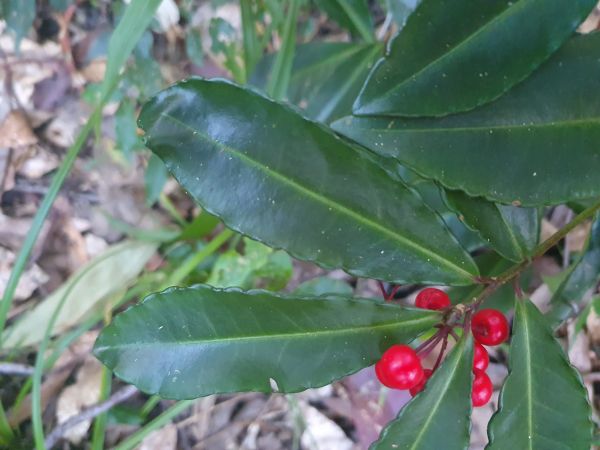
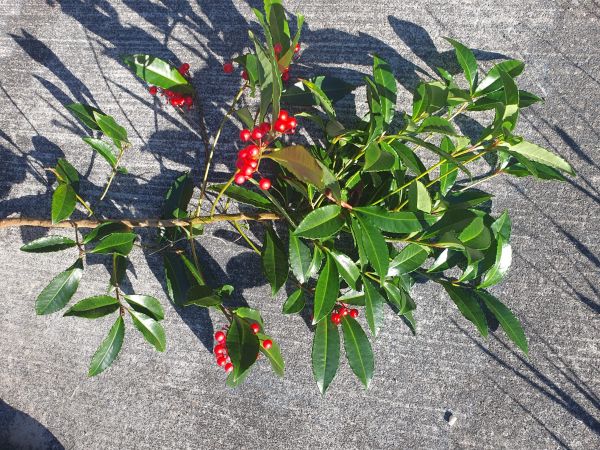
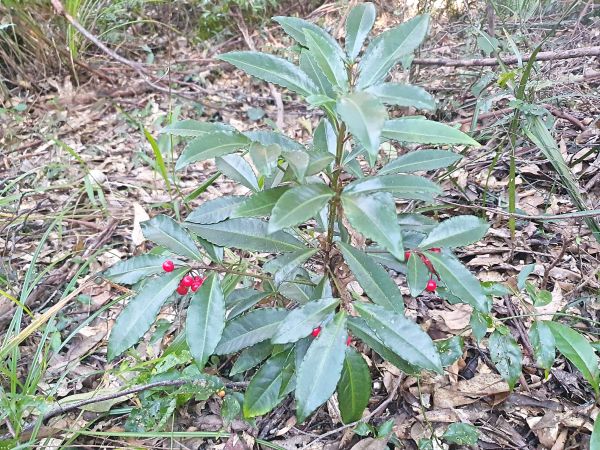
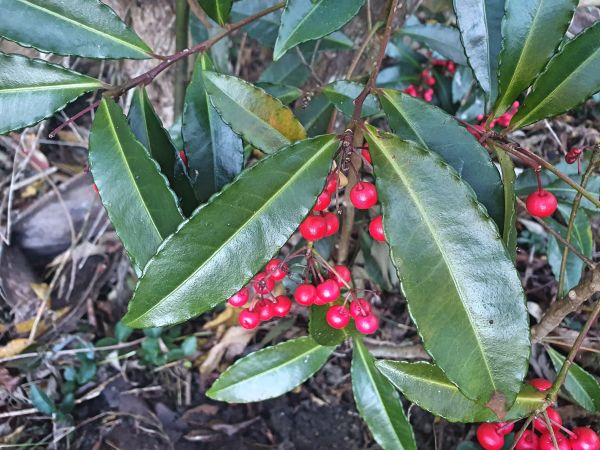
Please help to control and eradicate this weed
Common Names: Christmas berry, Baby Pepper, Australian holly, Coral Ardisia, Coral bush, Coralberry, Coralberry tree, Hen's-eyes, and Spiceberry
Family: Myrsinaceae
Origin: NE India, China to Japan
Habit: Evergreen, compact shrub 1-2m high with a bushy head.
Leaves: Dark glossy green above, paler and dull below, elliptic to slightly oblanceolate, 5-12cm long,1.5-3.5cm wide; margins serrated and crinkled.
Flowers: Inflorescence is a many-flowered, umbel. Flowers rather inconspicuous, white and starry, petals 4mm long. Summer – Autumn.
Fruit: Scarlet red globose berry, 5-8mm diam. Long lasting usually persisting through Winter.
Roots: Shallow and fibrous.
Dispersal: Seed spread by water, animals (foxes, rats & birds), humans, contaminated soil (earth-moving equipment, car tyres etc) and garden refuse dumping.
Control: Hand pull/dig, scrape and paint, foliar spray.
Individual plants should be hand-pulled and placed in a large garbage bag. Take care to remove seed heads and fruits to minimise new growth. Bags of plant material may be left in the sun for a period of weeks, to allow the green matter to rot...and they can then be put in the green recycling bin.
More Information: Coral Berry / Baby Pepper - The State of Queensland, Department of Agriculture and Fisheries, 2019 PDF
Other problems weeds in our local area
Other useful links:
Nambucca Valley Council: WEEDS - www.nambucca.nsw.gov.au/Environment/Events-Education-Getting-Involved/Weeds
Weeds Australia - https://weeds.org.au/
Weed Wise - NSW WeedWise
Department of Primary Industries: WEEDS - NSW Department of Primary Industries (DPI) - Biosecurity Information
